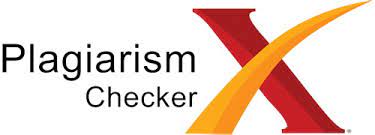Phosphoric Acid-Activated Carbon From Coffee Grounds and Fly Ash For Efficient Laundry Wastewater Adsorption
DOI:
https://doi.org/10.33603/jgst.v9i2.10649Keywords:
Adsorption, Coffee Grounds, Phosphate, Fly Ash, Laundry WasteAbstract
Laundry waste that is directly discharged into water bodies causes pollution due to its chemical content, such as phosphate. The adsorption method is chosen as an option to reduce the phosphate content in laundry waste due to its simple preparation and low cost. The adsorbent used is a mixture of coffee grounds and fly ash. The use of coffee grounds is based on the increasing waste from coffee shops, thus being utilized as an adsorbent. The aim of this study is to determine the effectiveness of coffee grounds and fly ash with the best combination of composition and contact time using the adsorption method. The stages begin with the preparation of coffee grounds and fly ash through carbonization and activation using H3PO4. The variations performed consisted of variations in the composition of coffee grounds and fly ash with a total of 1 gram in ratios of 1:4; 2:3; 1:1; 3:2; 4:1 and contact time variations of 15 minutes, 30 minutes, 45 minutes, 60 minutes, and 75 minutes. Based on the research results, the highest percentage of removal was found in the composition variation of coffee grounds and fly ash with a ratio of 1:4 for 75 minutes.
References
X. Chen et al., “Mitigating phosphorus pollution from detergents in the surface waters of China,” Science of the Total Environment, vol. 804, Jan. 2022, doi: 10.1016/j.scitotenv.2021.150125.
S. Abdoli et al., “A Review of the Efficiency of Phosphorus Removal and Recovery from Wastewater by Physicochemical and Biological Processes: Challenges and Opportunities,” Sep. 01, 2024, Multidisciplinary Digital Publishing Institute (MDPI). doi: 10.3390/w16172507.
A. Anggriawan, M. Yanggi Atwanda, N. Lubis, and an Fathoni, “Kemampuan Adsorpsi Logam Berat Cu Dengan Menggunakan Adsorben Kulit Jagung (Zea Mays) Adsorption Ability Of Cu Heavy Metal Using Corn Husk Adsorbens (Zea Mays),” 2019.
F. Aouay, A. Attia, L. Dammak, R. Ben Amar, and A. Deratani, “Activated Carbon Prepared from Waste Coffee Grounds: Characterization and Adsorption Properties of Dyes,” Materials, vol. 17, no. 13, Jul. 2024, doi: 10.3390/ma17133078.
S. V. Sklepova et al., “Porous Structure and Fractal Dimensions of Activated Carbon Prepared from Waste Coffee Grounds,” Materials, vol. 16, no. 18, Sep. 2023, doi: 10.3390/ma16186127.
N. Bouchelkia et al., “Study and Characterization of H3PO4 Activated Carbons Prepared from Jujube Stones for the Treatment of Industrial Textile Effluents,” Processes, vol. 11, no. 9, Sep. 2023, doi: 10.3390/pr11092694.
M. N. Amadou Kiari et al., “Influence of Orthophosphoric Acid Activation on the Quality of Activated Carbons,” Materials Science Forum, vol. 1122, pp. 91–98, May 2024, doi: 10.4028/p-kd7gn9.
F. Quesada-Plata, R. Ruiz-Rosas, E. Morallón, and D. Cazorla-Amorós, “Activated Carbons Prepared through H3PO4-Assisted Hydrothermal Carbonisation from Biomass Wastes: Porous Texture and Electrochemical Performance,” Chempluschem, vol. 81, no. 12, pp. 1349–1359, Dec. 2016, doi: 10.1002/cplu.201600412.
C. Muksin, F. Mulana, N. Nasrullah, A. Azwar, A. C. Ambarita, and M. P. Aulia, “Enhancing Diatomaceous Earth Characteristics for Adsorption of Heavy Metals from Acid Mine Drainage: The Impact of Dual Activation Process,” Jurnal Rekayasa Kimia & Lingkungan, vol. 19, no. 1, pp. 10–17, Jun. 2024, doi: 10.23955/rkl.v19i1.33000.
J. Lantos, N. Kumar, and B. Saha, “A Comprehensive Review of Fine Chemical Production Using Metal-Modified and Acidic Microporous and Mesoporous Catalytic Materials,” May 01, 2024, Multidisciplinary Digital Publishing Institute (MDPI). doi: 10.3390/catal14050317.
J. Chen, H. Kong, D. Wu, Z. Hu, Z. Wang, and Y. Wang, “Removal of phosphate from aqueous solution by zeolite synthesized from fly ash,” J Colloid Interface Sci, vol. 300, no. 2, pp. 491–497, Aug. 2006, doi: 10.1016/j.jcis.2006.04.010.
V. T. Trinh et al., “Phosphate Adsorption by Silver Nanoparticles-Loaded Activated Carbon derived from Tea Residue,” Sci Rep, vol. 10, no. 1, Dec. 2020, doi: 10.1038/s41598-020-60542-0.
A. Ouakouak, L. Youcef, D. Boulanouar, and S. Achour, “Adsorptive removal of phosphate from groundwater using granular activated carbon,” International Journal of Engineering Research in Africa, vol. 32, pp. 53–61, 2017, doi: 10.4028/www.scientific.net/JERA.32.53.
Y. Yusuf, F. Fatah, S. Chaerunnabila Gunawan, B. Soeswanto, R. Pasonang Sihombing, and A. Adhitasari, “Utilization of Coffee Grounds and Fly Ash as Adsorbents to Reduce Phosphate Content in Laundry Wastewater,” 2024.
M. Zhao, X. Ma, D. Chen, and Y. Liao, “Preparation of Honeycomb-Structured Activated Carbon-Zeolite Composites from Modified Fly Ash and the Adsorptive Removal of Pb(II),” ACS Omega, vol. 7, no. 11, pp. 9684–9689, Mar. 2022, doi: 10.1021/acsomega.1c07192.
Downloads
Published
Issue
Section
Citation Check
License
- Authors retain copyright and grant the journal right of first publication with the work simultaneously licensed under a Creative Commons Attribution-ShareAlike 4.0 International License that allows others to share and adapt the work with an acknowledgement of the works authorship and initial publication in this journal.
- Authors are able to enter into separate, additional contractual arrangements for the non-exclusive distribution of the journals published version of the work (e.g., post it to an institutional repository or publish it in a book), with an acknowledgement of its initial publication in this journal.
- Upon receiving the proofs, the Author/Editor agrees to promptly check the proofs carefully, correct any errors, and authorize the publication of the corrected proofs.












